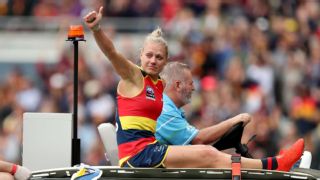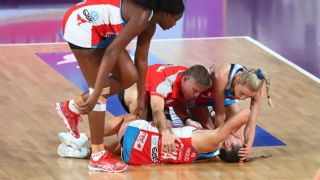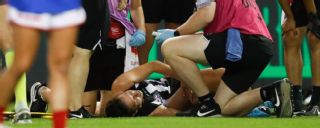|
The recent influx of female athletes taking on the more traditional male football codes -- rugby, league and Aussie Rules -- and the all-round increase of sports participation has seen a spike in injury, especially ACL tears, forcing sporting bodies to question what can be done, but with little scientific research to fall on, sports science has been forced to play catch up. With less than 10 percent of scientific research completed on female athletes, there's a significant lack of understanding around what can be done to reduce injury risk and improve performance. As sporting bodies look for a quick fix though, speculation and misinformation has spread and according to Dr Clare Minahan, Associate Professor in sports physiology at Griffith University, this is hindering women's sports ability to move forward. "There's lots of different views that have certainly come out in the media recently and not all of them are accurate," Minahan told ESPN. "Not all of them are based on science and I think that's where we take a step backwards when we're trying to move forwards in terms of female athletic performance, health and injury. "We tend to want a quick fix and unfortunately all these things, all these answers to our questions aren't quick. We need to look at the science and we need to look at the research." With hundreds of thousands of dollars spent on sports science each year, sports technology and injury prevention and management continually develops, but until recently there's been no specific need to focus on female athletes. According to Minahan there are three simple reasons for the lack of research into women; funding, interest and menstrual cycles. "Most research scientists -- particularly in sports science -- happen to be male, so naturally they would research sports that they're interested in. If you're an AFL player you'd start researching in AFL, it's just a natural selection if you'd like. "Another reason, because of the menstrual cycle and the associated fluctuating hormones that does interact with physiology, it's one less thing that can be controlled, so that poses another complexity to the research. "Also, some of these professional sports are typically male teams, so traditionally the sports that have money are male professional sports, and they put money into research. You might have the AFL that funds research projects and traditionally that's been in men only until recently."  The tally for ACL injuries in the 2020 AFLW season alone has hit 12 with three suffering the season ending injury in Week 5. Studies have shown women are two to 10 times more likely to suffer the season ending injury than their male counterparts, but recently speculation has mounted that the menstrual cycle could play a role as a risk factor. Sporting sides such as the US Women's Soccer team and Chelsea Women's football have announced they are currently using period tracking in order to reduce risk factors around injury, but Minahan says there's no scientific evidence at this time to support the theory. "In terms of the menstrual cycle, we just don't have the evidence in terms to support that it is involved in a higher risk of ACL injury. There's certainly some physiology that could be linked to that, but we don't have the evidence yet, so we can't make these broad statements. There needs to be some work in that area for sure, I wouldn't close the door on that type of research, I think it'll be useful, but we can't make those claims just yet." While Dr Minahan believes there should be continued research on the menstrual cycle and its impact on athletes, she also points to several other factors that should also be investigated and could be impacting female players. Questions have already been raised with the AFL's decision to organize AFLW fixtures in January and February when the pitches are harder, but other factors such as a lack of long term preparation for collisions and tackle evasion in female athletes could be a factor.  "The recent increase in participation in women playing the four Australia football codes has led to an increase in injury, but we're yet to know whether that's because they're female specifically or whether it's something to do with their long term preparation -- not just the 10 weeks leading up, but the fact that they may not have been playing or doing this activity since they were three, four, five, six, seven, eight years old. "Boys tend to play that tackle evasion type sport as soon as they get to school, so they learn how to collide, they learn how to crash to the ground. What our female football codes are doing is taking our best basketballers, best touch players, best netballers -- they're exceptional athletes -- but we're putting them on a field that's a different surfaces, it's all of a sudden 360 degrees and the ball is coming from all different angles, so are the players and it's a collision sport - they haven't been doing that for half of their life. The fact that they're female may be a smaller part to actually their long term preparation for these collision sports." As women's sport continues to progress and grow, so too will the research and with that an improvement in injury prevention, recovery and improved performance in female athletes. "Were certainly missing out on reaching full potential, I'd definitely say that, because we are just looking at the results of research in men. There's no reason why everything we know about men can't be learned specifically in women."
|

